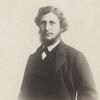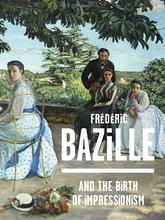More about Queen's Gate at Aigues-Mortes
- All
- Info
- Shop

Sr. Editor
Jean-Frederic Bazille was inspired by the medieval ruins near his hometown of Montpellier.
In 1867, Bazille visited Aigues-Mortes with the aim to gain inspiration and to “paint some pine trees."Though the artist was careful to visit in May, when, as he wrote to his parents, “there aren’t fevers going around,” he still encountered some troubles due to the weather. Still, Bazille managed four days of work thanks to the intermittent sun and, in that time, he began three to four paintings, all landscapes.
However, this painting stands out from the rest as it features the large wall as the focal point, rather than the open landscapes depicted in the other paintings, which were completed from the opposite vantage point, on the other side of the ruins. As the authors of the hefty tome “Origins of Impressionism,” published by the Met describe, “Porte de la Reine a Augues-Mortes presents an unexpected composition and unusual lighting. The thirteenth-century gate looms ominously as the afternoon sun falls behind it, casting the foreground into a deep shadow, while tantalizingly illuminating the rue Emile Jamais within.”
The authors also point out that, though the brushwork used in this painting is reminiscent of both Edouard Manet and Claude Monet’s work, Bazille decides to apply the Impressionist style to a sparsely populated, countryside landscape, rather than the urban Parisian scenes popular with some other Impressionists of the time. His interest in the history and natural beauty of the scenery makes sense, as he was raised in Southern France, and Montpellier, where he grew up, was an important center for commerce and culture in the Middle Ages.
The walls in which this gate sits are ramparts designed to protect the Tower of Constance, built in 1242 to house Louis IX’s garrison, as the King had recently acquired the land from local monks (in exchange for a tax break on salt), so that he could have access to the Mediterranean Sea. He embarked on Crusades 7 and 8 from here. The tower was built on the former location of one erected by Charlemagne in 791. The walls were not completely constructed under Louis IX's reign, but were finished by his son, Philip III the Bold, though it even took him another 30 years. Construction took a lot longer in the 13th century.
Sources
- Navas, Sandrine, “The ramparts of Aigues-Mortes seen by Frederic Bazille are exhibited in Montpellier,” Franceinfo, May 18, 2016. Accessed March 22, 2020. https://france3-regions.francetvinfo.fr/occitanie/herault/montpellier-m…
- Pitman, Dianne W., Bazille: Purity, Pose, and Painting in the 1860s. Pennsylvania: The Pennsylvania State University Press, 1998.
- Schjeldahl, Peter, “Frederic Bazille’s short career, reconsidered,” The New Yorker, April 10, 2017. https://www.newyorker.com/magazine/2017/04/17/frederic-bazilles-short-c…
- Tinterow, Gary, Loyrette, Henri, Origins of Impressionism. New York: The Metropolitan Museum of Art, 1994.












